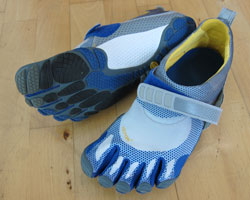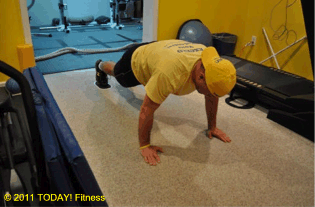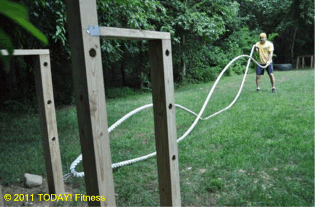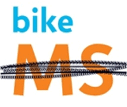|
Those Weird
Looking Toe Shoes |
|
I know that a lot of you
had to have seen these goofy looking shoe/socks.
Well, I went a step further and bought a black pair of Vibram FiveFinger KSOs. I haven't started
running in them yet, nor am I planning on running a
lot, but I got them mostly for weight training.
I've been studying more about kettlebell training
and how positive ground contact and force is so much
better than all your hip force being aborbed by the
thick soles of running shoes... not to mention the
changes in balance that result from the higher heel
of running shoes. So instead of using my
wrestling shoes (which I prefer to use only on the
mat) I figured these Five Fingers made sense to
train in.

Vibram offers several
different models of their FiveFinger shoes.
The ones pictured above have more of a tread on the
bottom for traction and running, as compared to the
slicker soles that my KSOs have. They range in
price from $75 to $110. The Vibram website
does a good job of describing the intended use of
each model as well as giving you close up pics and
color choices.
The first thing that
I can tell you is that they do take a little while
to get used to. You kind of have to wiggle
into them since your toes each have their own
individual pockets. Having stuff between your
toes (aside from jam and lint) takes a bit of
getting used to also. Before doing much of
anything, I wore mine around the house for a week
just to break them in and get used to them.
After a week of break
in, I can honestly say that these shoes fit like a
glove (for my feet). I've done some weight
training with them, some light short distance
jogging, and they are surprisingly comfortable yet
extremely flexible.
The article below was
featured in a recent newsletter I received from the
American Council on Exercise (ACE).
|
|
Like Barefoot,
Only Better? |
|
By McCarthy, M.S., Porcari, Ph.D., Kernozek,
Ph.D., Willson, Ph.D., and Foster, Ph.D.,
with Mark Anders
Barefoot-style and
minimalist shoes are one of the hottest trends to
sweep the footwear category since Nike Waffle
Trainer running shoes and Crocs. In fact, according
to OIA Vantage Point and Leisure Trends, these types
of shoes have continued to enjoy double-digit sales
growth since the start of 2010 and have outsold
nearly every other type of shoe during that time.
One of the shoes that
has led the surge in popularity is the Vibram
FiveFingers, a quirky-looking sock-style shoe with
separate compartments for each toe. These shoes are
designed to combine the feel of being barefoot with
the abrasion protection of wearing a shoe. Many
adherents also believe these shoes improve
proprioception, balance and foot strength. You’ve no
doubt seen people wearing these types of shoes to
work out in the gym, for fitness walking, yoga,
water sports and, one of the most controversial
uses, running.
But why would someone
want to run without running shoes? Lower-extremity
injuries can be found in 20 percent to nearly 80
percent of all those who run, with some experts
pointing to the high-impact forces of heels hitting
the pavement and the use of over-cushioned, overly
supportive running shoes as potential culprits. To
that end, a small niche of runners have shunned
shoes altogether as a way to escape chronic pain and
injuries.
Here’s their logic:
Barefoot runners tend to run more lightly, landing
near the balls of their feet while generating less
pounding than regular heel strike-style
runners. Less pounding should then equal fewer
injuries. And that notion seems to be catching on
even more quickly with the advent of barefoot-style
shoes, which make running “barefoot” more
comfortable and more appealing to some runners.
In a study by the American Council on Exercise
(ACE), the team reported that
all of the subjects were rear-foot strikers while
wearing typical running shoes, landing predominantly
on the heel. However, while running barefoot
and in Vibrams, approximately one-half of the
subjects switched to a forefoot strike pattern while
the other half continued to
impact the ground with their heels.
“It’s tough to re-learn to run,” says Dr. John
Porcari. “When you look at the data even though we
encouraged them to run with a more forefoot strike
while wearing the Vibrams, half of the subjects
still continued to land on their heels. Even with
two weeks to practice and instruction in how to use
the barefoot shoes, [the subjects’] bodies still
tended to run the way they’ve
always run.”
Those subjects who switched to a forefoot strike
showed a much more plantar-flexed ankle at ground
contact
while wearing the Vibrams and while barefoot
running. This greater flexion appears to allow
better absorption of
the impact forces of running. However, those
subjects who continued to utilize a rear-foot strike
pattern experienced a higher rate of loading while
wearing the Vibrams and running barefoot. In fact,
load rates surpassed those of running with the
typical running shoes, perhaps due to the lack of
heel cushioning of the
Vibrams or while running barefoot. Researchers also
noted that, for all subjects, there was less knee
flexion while running barefoot and with the Vibrams,
a condition associated with lower injury rates.
The bottom line is clear. “Just because you
put the Vibrams on your feet doesn’t mean you’ll
automatically adopt the correct running stride,”
says Porcari. Runners who fail to change over
to a more forefoot stride while wearing Vibrams may
open themselves up to discomfort and possible
injury. “Buying these Vibrams and continuing to land
your heels is probably worse than wearing shoes
because the Vibrams don’t have any cushioning,” he
says.
Whether you’re planning to run
barefoot or while donning
Vibrams, follow these tips from ACE’s
Pete McCall:
Walk first.
“Give your body time to acclimate and adapt,” he
says. “Start walking in them first and let your
body get used to it.”
Ease on in. “If
you’re currently doing 30 miles a week, try a
quarter of that wearing the Vibrams or barefoot,
and do the rest in your regular shoes.”
Change it up.
McCall says it’s key to change your running style
to fit barefoot running. In particular, focus on
running with short strides while landing lightly
on your forefoot.
|
|
As far as strength
training goes, ACE Exercise Physiologist
Pete McCall recommends trying Vibrams or similar
style footwear while strength training. “They allow
the foot to have better contact with the ground,” he
says. “Having your heel elevated, like in a running
shoe or other kind of training shoe, can actually
throw off your balance.” Besides better balance,
McCall says he’s experienced improved foot dexterity
after a few years of strength training while wearing Vibrams.
ref:
ACE Certified News, August 2011 |
|

|
|
|
Bodyweight Exercise of the Month! |
|
Slider
Slalom

Summary:
More slider exercises... I figured
I'd hit the abs again since everyone is so into it. This
slider move is kinda like a cross between the slalom jumps
that Shawn T does in INSANITY and the jackknife exercise that
you can do on a stability ball. It's all abs for the
most part and by crunching to each side, you add in some nice
oblique work too. Simple yet effective!
Target: abs and sides
(rectus abdominis and obliques)
Count:
4 count
Description: Start in
a pushup position with your feet on a pair of furniture
sliders. Keeping your back straight, crunch your abs
while you try to pull you feet to the side of one of your
hands. Return back to pushup position before you perform
the same movement to the opposite hand. Repeat for
maximum reps or until your form suffers.
|
|
My Latest
Contraption
J |
|
For those of you that
haven't been keeping up with the newsletters or
Facebook group, our outdoor warrior workout club has
been a blast. We've had a few dozen people in
and out over the spring and summer and a bunch that
have become true veterans. There's something
about flipping tires, pushing sleds, sandbags,
ropes, kettlebells, and the other toys that get the
adrenaline pumping and make you feel like you've
accomplished something!
I'm always looking to
shake things up at these workouts and throw some new
tools at the participants. I've been thinking
about making this outdoor exercise station for a few
years now, so I finally decided to just go ahead and
do it. I tried to keep the standard chin and
dip tower in mind when designing it, but I also
wanted some versatility to perform as many exercises
as possible on it since I was going through all the
trouble of making it!
The design is pretty
simple really. My main focus was stability and
versatility. I got a pair of 12 foot 4x4s and
a pair of 8 foot 4x4s that I buried about 2.5 feet
in the ground with pea gravel. I made some
cross pieces out of 2x4s for stability and used some
decking straps and screws to attach them. I
drilled 1.5 inch holes at various levels to allow me
to thread 1 inch pipes at different locations,
depending on the exercise that I'm doing. I
also added a few eye hooks for some rope work.

So as shown in the slide
show above, I have used this multi-tower for
chin-ups, dips, battling ropes, suspension training,
lever rope climbs, inverted rows, and tricep blasts.
I'm planning to add some additional eye hooks up top
with spring clips to allow for some more chin and
suspension versatility, as well as my ab straps...
but this has proven to be a good start
J
Material total came in
at just under $100 for this little project, with the
4 foot pipes accounting for just over $20 of it.
Not too bad when you consider the additional
exercises that I'm able to add to my outdoor boot
camps now. Come
join us one of
these weekends and see for yourself
J
|
|
Annual MS
Bike Ride |
|

Year number 14 for
me with the Bike to the Bay.
I'll keep participating as long as I can in this one... it's a
great ride for a great cause.
This is my annual pitch for riders, volunteers, and
sponsors. Participation in the National MS Society's annual
ride will help raise funds for Multiple Sclerosis research and local
programs.
The 2011 ride is scheduled for
Saturday, September 24th and Sunday, September 25th. There are a variety of ride length options for all levels
of cyclists. You can do the new 25k ride (15.5 miles),
45 miles, 75 miles (the full route), 100 mile century, or 150
miles (full route on Saturday and returning on Sunday).
If you are interested in participating in the Delaware MS150
Bike to the Bay this year, you can email me at
pmazzeo@todayfitness.net
or
click here to join Team Bank of America.
Sponsor dollars
are good too! If you are able make a
charitable donation
by sponsoring me for the ride, we can reach our goals that
much quicker! Every dollar contributed will help us to end the devastating effects
of MS, sooner rather than later.
Thanks for your support!
|
|
It's Go Time!
|
|
It's September already... that's it for the summer. So
how was the beach? Did everybody feel confident wearing
their swim gear? I say it every year... now is not the
time to relax and take it easy. Now is the time to plan
and attack your body changes for next summer! These
things don't happen overnight and you can't cram all your
exercise and diet changes in a month or so before swim suit
weather and expect big results! Get a plan and START
TODAY!
But wait, I'm moving too fast. The kids might be back to
school, but we still have time to take advantage of the
weather! I still have a charity bike ride and at least
one more mud run scheduled before I go into winter hibernation,
then I'm actually looking forward to digging into my INSANITY
DVDs and sandbag intervals again during the winter months.
I like to mix things up and keep it interesting, but everybody
is different. Find out what motivates you and use it as
fuel to continuously energize your workouts.
For
prior issues of this eNewsletter, to subscribe, or
unsubscribe, please visit the following
link -->
todayfitness.net/news.
Exceed Your
Potential!
Pete
Mazzeo, CPT
pmazzeo@todayfitness.net
"You can tell how big a
person is
by what it takes to discourage them."
youtube of the month -->
Five Finger/Barefoot Study
ACE
Certified Study on the Vibram Five Finger for exercise.
|
|